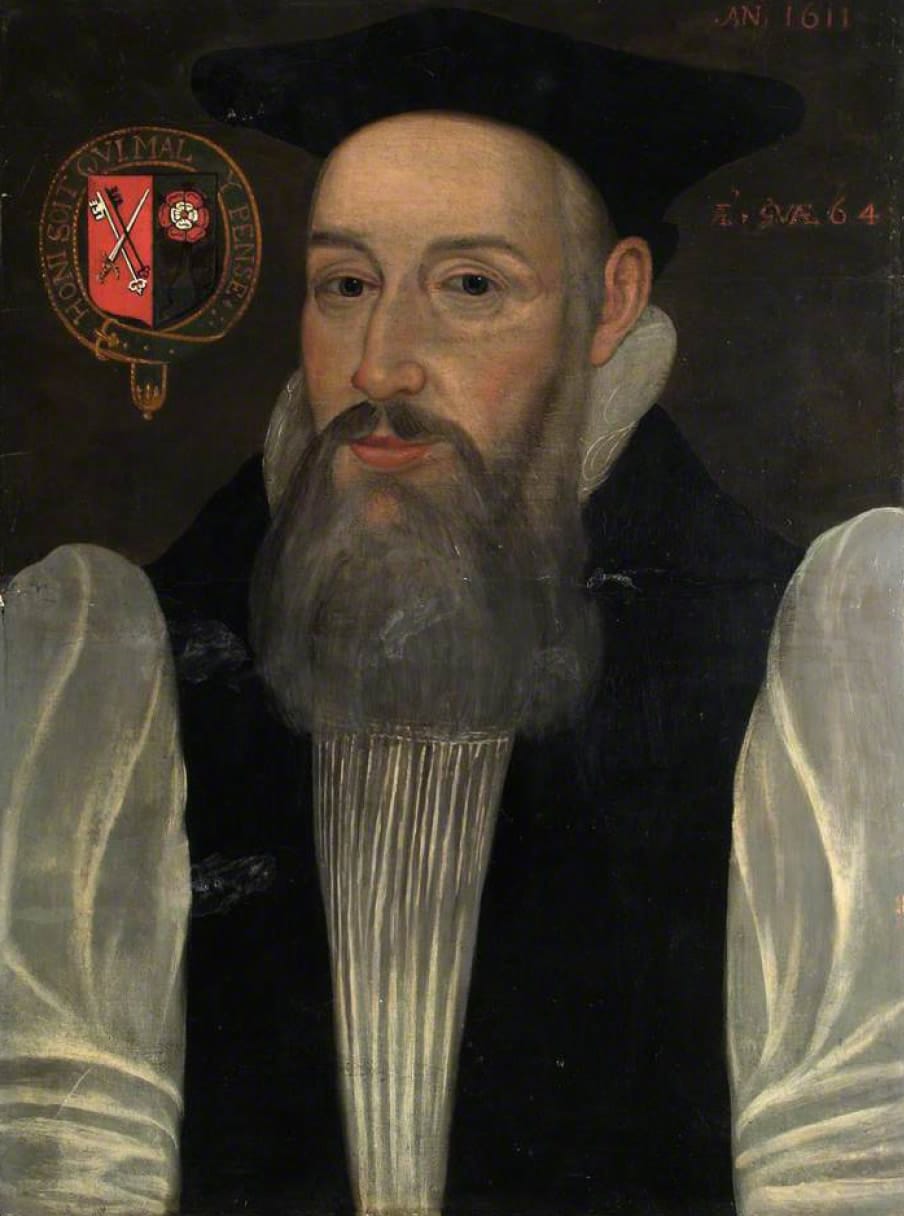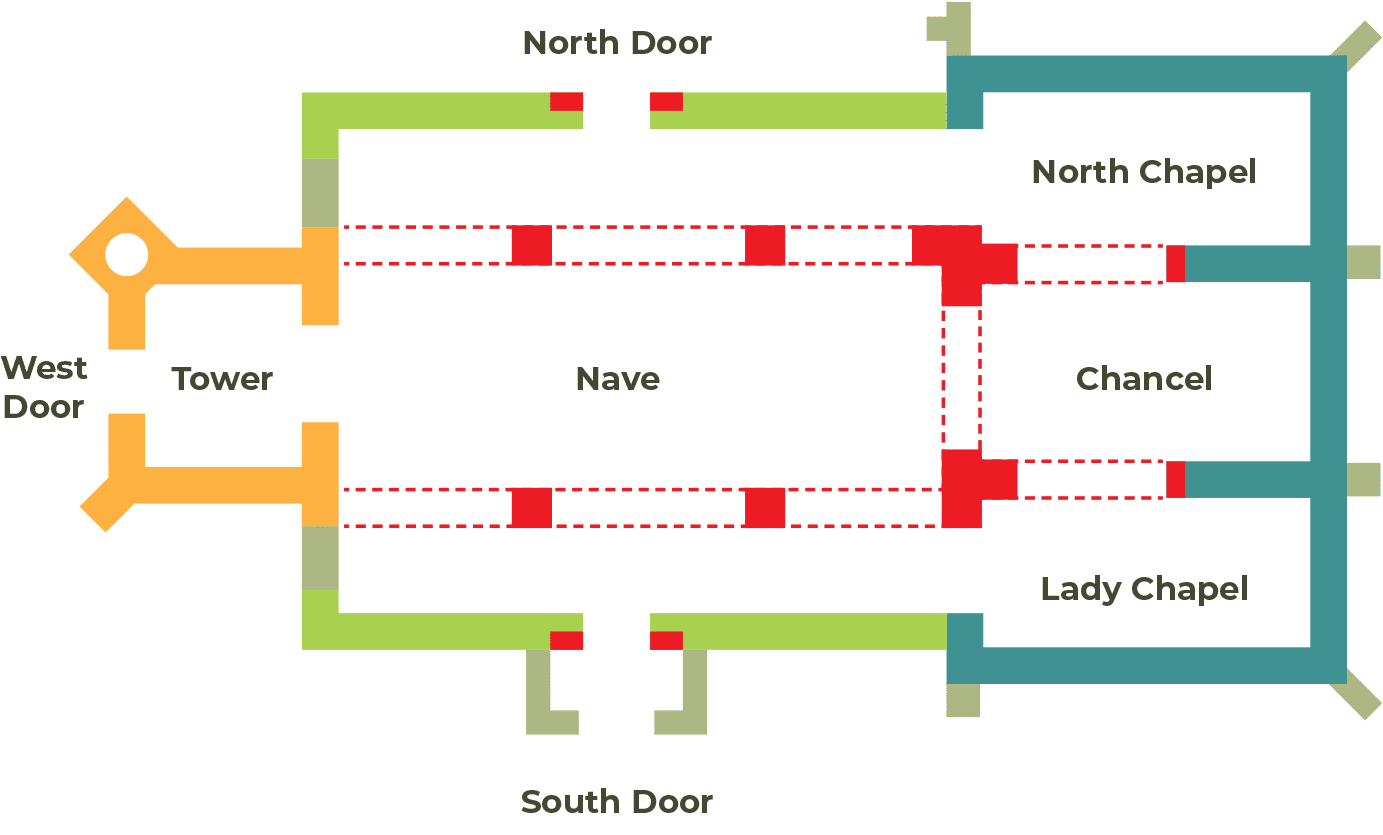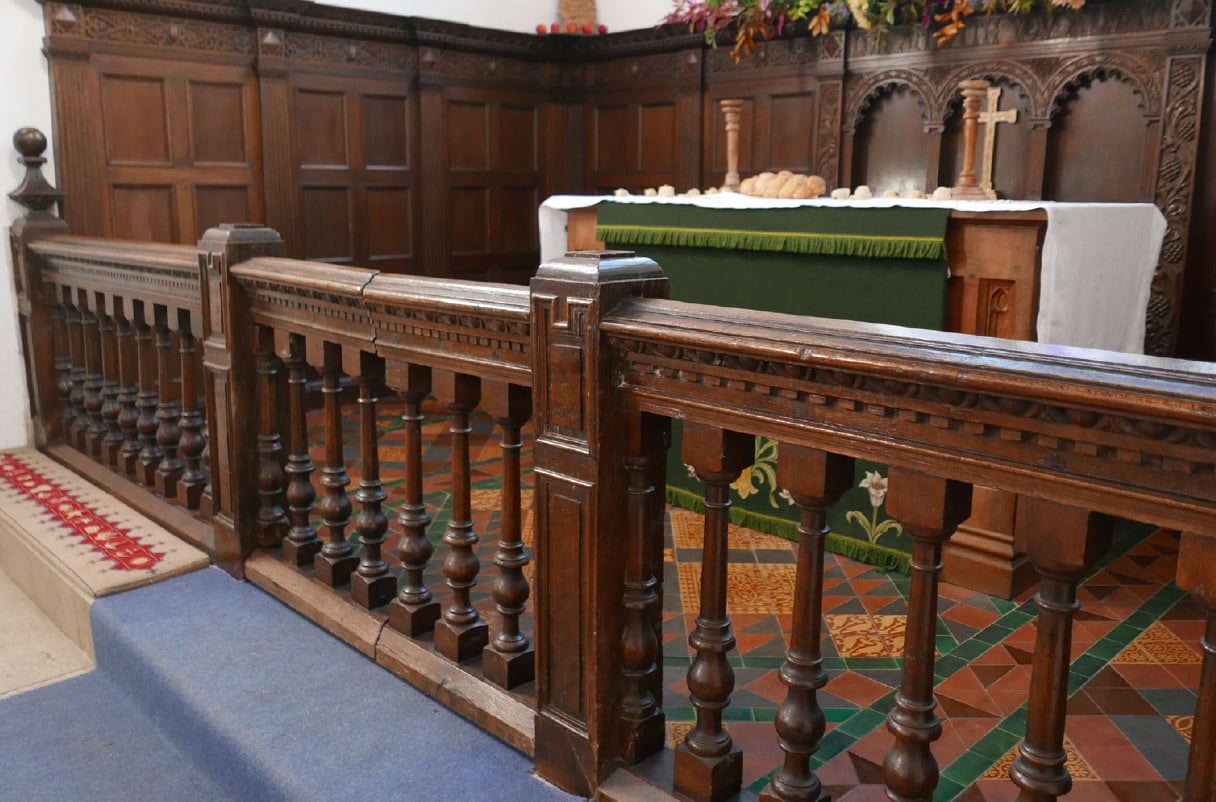England’s churches were transformed by the Reformation. 16th century reforms, triggered by rejection of Catholic practices and Henry VIII’s desire for divorce, split the Church in England away from Rome. This was part of a Protestant movement across Europe. Trappings of Catholic worship were eliminated, such as images of the Virgin Mary and ornate wall paintings.
Remarkably, through the turmoil of Henry VIII’s break from Rome, Mary I’s tempestuous return to Catholicism and Elizabeth I’s reinstatement of Protestant values, a single rector, Dr Cufaud, maintained his position at Droxford Church.
The Church of England made worship accessible to all, by conducting services in English rather than the traditional Latin. Thomas Bilson, rector of Droxford from 1583 and later Bishop of Winchester, was a leading member of the group of clerics who compiled the King James Bible, perhaps the most influential book in the English language.

© Lambeth Palace

Illustration by Michael Collins
Above the west door, the date 1599 is probably a reference to completion of the church tower. 17th century bells still ring in its belfry today.
The chancel altar rails are believed to be those installed by Nicholas Preston when he regained the rectorship of Droxford in 1660, on the restoration of Charles II as king. Preston had been removed in 1650 by Puritans, fundamentalists who tried to rid England’s churches of lingering Catholic symbolism.

Written by Ivor Coleman, Designed by David Goodman